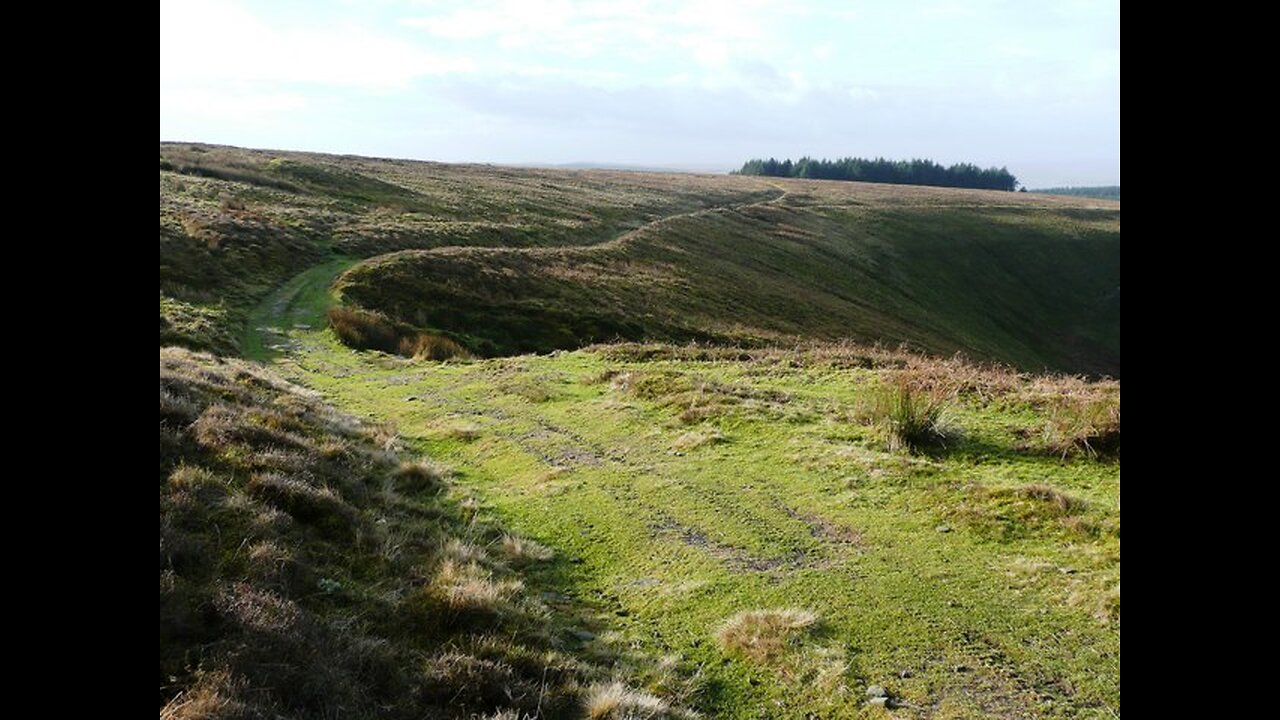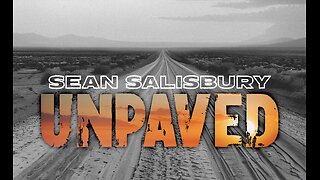Premium Only Content

"The Secret Glory", Book V, by Arthur Machen
Two more secret chapters! This were originally submitted to the publisher by Machen, but then yanked before it went to print and replace by epilogue you got earlier.
----
0:00:00 Book 5, Chapter 1
0:28:26 Book 5, Chapter 2
0:46:45 Book 5, Chapter 3
1:08:49 Book 5, Chapter 4
1:39:40 Book 5, Chapter 5
----
Montes exulteraverunt ut ariets: et colles sicut agni ovium: Google translate says: They made the mountains cry out like rams, and the hills like lambs of sheep.
Qui convertit petram in stagna aquarum: et rupem in fontes aquarum: This is Psalms 113:8, at least of the Biblia Sacra Vulgata, being something to the effect of "He converted the rock into pools of water, and the cliff into fountains of waters."
Laetare: rejoice
"dying in his cabin" - the text here has the word 'calin'; but that clearly must be wrong, so I changed it to 'cabin' in my recording.
Vich Ian Vohr: From Sir Walter Scott's novel "Waverley", there is a Highlander chieftain named Fergus Mac-Ivor Vich Ian Vohr of Glennaquoich. The text has this name as Vich Dan Vohr, but clearly that must be an error, so I have corrected it here.
Try-east: Trieste, a city in modern day Italy on the border with Slovenia, although its history before the modern period is quite complex as far as who controlled it when. This difference in spelling versus pronunciation loses its impact in narration in this form. Ah well.
Sylvia in Sylva: Sylvia in the Woods
Mysterium Calicis: The Mystery of the Chalice
Hypnerotomachia: Strife of Love in a Dream (there is a real book by the title of Hypnerotomachia Poliphili, written by Francesco Colonna, published in 1499).
Nuptiae Mysticae: The Mystical Wedding
Mons Magorum: The Mountain of the Magi
Nox Illuminans: literally, "illuminating the night", but I'm not sure what a good idiomatic translation would be?
Cantus Planus: Plainsong, a real thing used in the liturgies of Christianity, these are chants composed in Latin, and was the main (sole?) type of music used by the Church up until the 9th century.
Instauratio Magna: Great Instauration. What's instauration? The action of restoring or renewing something.
Jube haec perferri per manus sancti Angeli tui in sublime altare tuum, in conspectu divinae majestatis tuae: Part of the Canon of the Mass, i.e. the Eucharistic Prayer, it translates to the effect of "Command these offerings to be borne by the hands of Your holy angels to Your altar on high, in the presence of Your divine Majesty".
"Round thee blow, self-pleached deep," etc.: Stanza V from Tennyson's "A Dirge"
Gloria et honore coronasti eum: from Psalm 8, verses 6, and crowned them with glory and honor
Pour etre vraiment grand il faut etre l'inventeur du Nouveau Cabinet hygienique et laxatif: To be truly great you have to be the inventor of the New Hygienic and Laxative Cabinet
Vidi aquam: The name of an antiphon (a short chant), used from Easter Sunday throughout the season of Eastertide until the feast of Pentecost, in place of the usual "Asperge me" antiphon.
Ibi fons vivus, fons immortalis, aqua non amara, ibi vere floret Rose Rosarum, in horto incluso: There is a living spring, an immortal spring, water that is not bitter, there truly blooms the Rose of Roses, enclosed in the garden
Impingnasti in oleo caput meum: Psalm 22, verse 5 of the Biblia Sacra Vulgata, Psalm 23 in English language versions of the Bible, for some reason. "Thou annoistest my head with oil".
Hortus odoribus affluet omnibus, hic Paradisus / Plenaque cantica, plenaque grati, gaudia, risus: From Bernard of Cluny's "De contumptu mundi". Bernard being a 12th century French Benedictine monk. These lines would translate to something like "The garden will overflow with fragrances for all, this Paradise / Full of song, full of gratitude, joy, laughter"
fons vuvus, aqua regenerans: a spring of water, regenerating water. The full line should be "sit fons vuvus, aqua regenerans, unda purificans", having to do with baptisms.
Vides ut Faunus lateat in sylva; ibi saltat et cantat chorus Nympharum aeternus: You see that the Faun is hiding in the forest; there dances and sings the eternal chorus of Nymphs
The pictures used are:
Chapter 1: "Path on Mynydd Maen" by Graham Horn, CC BY-SA 2.0 DEED (https://creativecommons.org/licenses/by-sa/2.0/)
Chapter 2: the Town of Caerleon on the River Usk, circa 1800, by William Byrne, published by T. Cadell and W. Davies
Chapter 3: Llancaiach Fawr Manor, a Tudor manor house in South Wales (in the Rhymney Valley)
Chapter 4: St. Brendan and crew celebrate Easter on a whale.
Chapter 5: "A Welsh hill farm" by Jeremy Bolwell, CC BY-SA 2.0 DEED (https://creativecommons.org/licenses/by-sa/2.0/)
-
 LIVE
LIVE
Akademiks
1 hour agoDay 9/30. Shannon Sharpe Own Homies Turning They back on him? Uzi Rushed to Hospital? Lil Durk Bond
2,494 watching -
 1:11:52
1:11:52
Russell Brand
2 hours agoThey LIED About 9/11—Now the Truth Is Leaking Out – SF572
101K54 -
 56:46
56:46
Sean Unpaved
2 hours agoNFL Draft Deep Dive: First-Round Movers & Stars to Watch
14.5K -
 54:38
54:38
Ben Shapiro
2 hours agoEp. 2185 - My Journey To Ukraine and My Interview With Zelensky
27.4K18 -
 1:59:11
1:59:11
The Dilley Show
2 hours ago $10.51 earnedTrump Oval Office, 100 Days Rally and More! w/Author Brenden Dilley 04/24/2025
23.4K1 -
 LIVE
LIVE
SternAmerican
23 hours agoElection Integrity Call - Expose the Fraud. Defend the Republic. Thursday, April 24th | 2:00 PM EST
161 watching -
 LIVE
LIVE
The Boomer Effect
18 hours agoIt's Your Money! Not Washington's
59 watching -
 1:01:59
1:01:59
Timcast
2 hours agoKyiv ATTACKED, Trump Tells Putin “STOP,” Slams Zelenskyy For REFUSING Peace Ft Sebastian Gorka
121K76 -
 LIVE
LIVE
Viss
4 hours ago🔴LIVE - DARK BROTHERHOOD Questline Today! - TES IV Oblivion Remastered
242 watching -
 2:10:03
2:10:03
Steven Crowder
5 hours agoTrump Lays Down the Law on Ukraine & Russia: Take the Deal or We Walk
331K140